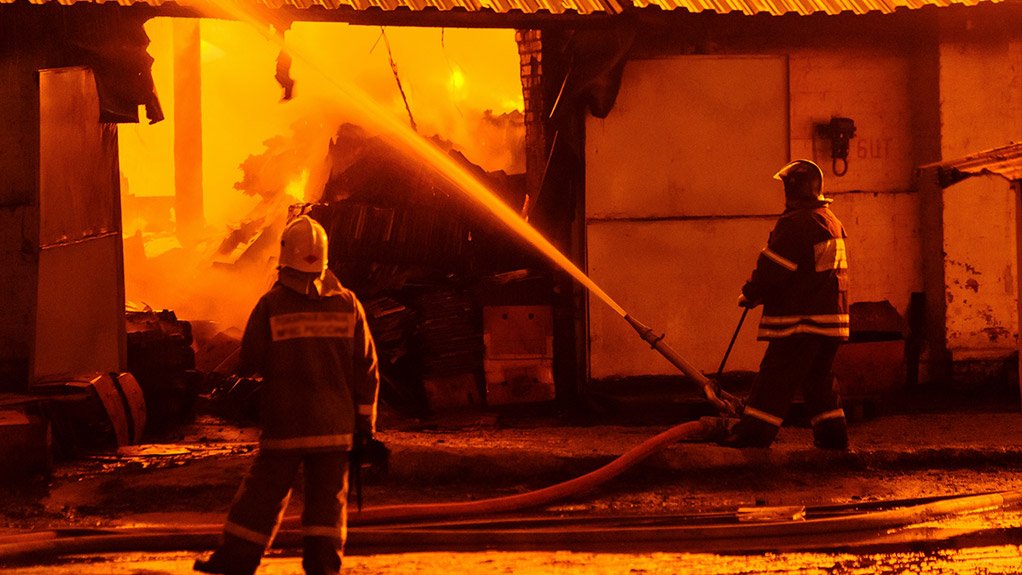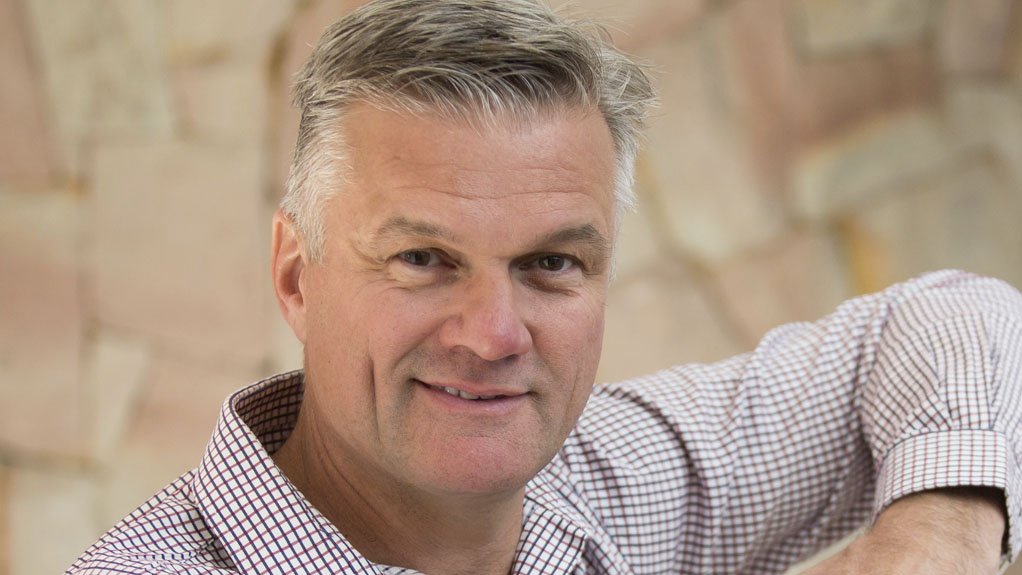Rational fire design solutions championed



FIRE RISKS The three main causes of fire are electrical, arson and heating equipment
MICHAEL VAN NIEKERK Rational design takes into account the behaviour of a building during a fire, thereby minimising the potentially devastating impact it might have
It is imperative for buildings to be designed to allow for safe escape and the control of fire and smoke, as a minor design flaw could potentially put people, equipment and property at risk.
For example, inhaling five breaths in a smoke filled room can lead to death.
All buildings in South Africa need to comply with the requirements of the National Building Regulations and Building Standards Act, Act No 103 of 1977, Fire Protection, as set out in SANS 10400 Part T: 2011.
A deemed-to-satisfy fire safety solution is one where the dimensions and construction of the building, the materials used in the construction, and the occupancy and storage of items in the building all fall within the prescriptive requirements or limitations set out in SANS 10400-T.
Any deviation from the prescriptive requirements or limitations requires a rational design to be completed in accordance with the fire engineering methodology framework requirements of BS 7974, and application of fire safety engineering principles to the design of buildings, supported by the published documents that form part of the BS 7974 framework.
Fire risk management and support consultant ASP Fire is a specialist in this field.
A rational design is the detailed design of fire safety and prevention mechanisms and strategies in a building to comply with the National Building Regulations, where prescriptive requirements cannot be met. This process is not elective, inasmuch as only certain parts of the framework may be used, or that the results of the process are subjective or optional.
ASP Fire CEO Michael van Niekerk says a rational design begins with a fire risk consultant visiting the premises, or reviewing a set of new building plans, for a comprehensive evaluation of all areas of the property – looking at all areas of fire safety and risk in detail. “Sound fire engineering principles are applied to ensure that the design complies with the life, building, fire behavioural and environmental fire safety objectives required by law.”
When undertaking a rational design, ASP Fire abides by the framework that is set out in the internationally recognised BS 7974 British fire safety standard. Many designers in South Africa do not follow this methodology, either because they do not fully understand it, or because they elect to apply only certain elements of the framework – completely unaware that they are putting people’s lives and assets at risk. Often consultants copy and paste from previous rational design reports unaware that they are including errors or mistakes in evaluating or applying fire engineering principles; sometimes even including errata in formulae or fire safety designs.
According to Van Niekerk, the three main causes of fire are electrical, arson and heating equipment. “In the event that a major fire that results in immense damage and the possible death of occupants, the fire engineer will be held liable. Rational design takes into account the behaviour of a building during a fire, thereby minimising the potentially devastating impact it might have,” he explains.
The products stored or manufactured in the building, the occupants of the building and the built and natural environments are also analysed. Other aspects to consider include how people will respond to a fire, based on their level of alertness and familiarity with their surroundings. A fundamental basic is that the building should be designed to withstand fire so that occupants, including disabled persons, can escape safely, and appropriate fire equipment must be in an adequate and easily accessible area.
“Fires can be dealt with through three main actions. The first is controlling the growth of the fire to prevent it from spreading. The next is suppression, which involves rapidly cooling the fire. Finally, extinguishing the fire means that there is no heated substance remaining. Evacuation should also be safe and easy while allowing unrestricted access for emergency services. The installed fire detection system must be able to pick up the fire as soon as possible, so that it can warn occupants and allow them to escape before untenable conditions are reached,” says Van Niekerk.
Rational Design Process
Rational design begins with a qualitative design review, which includes an architectural review, fire safety objectives, fire hazards and risks, trial fire safety designs, and worst-case fire scenarios for analysis. Consultants often ignore the building roof’s geometry and the required substitute rectangular volume used in smoke fill formulae.
The next step is quantitative analysis according to BS 7974 published documents. Here, the main focus is on the development of fire within the enclosure of origin, spread of smoke within the enclosure of origin, structural response and fire spread beyond the enclosure of origin, detection of fire and activation of fire protection systems, fire services intervention, and evacuation of occupants.
Assessment against criteria is the final step, where the fire safety designs developed during the engineering analysis are assessed to ensure that the objectives established at the beginning of the process are in fact met.
After the completion of the fire risk assessment and the drafting of the rational design report, ASP Fire provides the client with a report with practical actions to follow. Van Niekerk states that the report comprises a detailed and documented objective fire risk assessment, as well as fire engineering calculations and analysis where required, covering all aspects of fire risk and safety.
“This guides the client in protecting its business, employees and customers by providing prioritised recommendations for action, to rectify problem areas and strengthen existing fire safety procedures. This also ensures that the client complies with fire safety regulations for the protection of life, property and the environment,” Van Niekerk elaborates.
As part of its value-added service, ASP Fire also works closely with insurance brokers and underwriters to address a client’s fire risk based on the outcomes of the fire safety risk assessment report. This assists in preventing damage to property and products, loss of life, financial loss, consequential loss of profit, loss of productivity and insurance repercussions.
“We also provide flammable liquid store designs and certification, special risk fire protection systems, visual safety awareness programmes, safety, health, environment and quality file drafting and implementation, emergency response and business continuity plans, emergency evacuation plan design, emergency evacuation drills and fire equipment training,” adds Van Niekerk.
Moreover, Van Niekerk reveals that ASP Fire also offers standardised and customised client training. “The client has the option to select a standard fire risk and safety course, or have a customised training programme developed around individually specific needs, or the areas indicated in the fire safety risk assessment report,” he concludes.
Comments
Press Office
Announcements
What's On
Subscribe to improve your user experience...
Option 1 (equivalent of R125 a month):
Receive a weekly copy of Creamer Media's Engineering News & Mining Weekly magazine
(print copy for those in South Africa and e-magazine for those outside of South Africa)
Receive daily email newsletters
Access to full search results
Access archive of magazine back copies
Access to Projects in Progress
Access to ONE Research Report of your choice in PDF format
Option 2 (equivalent of R375 a month):
All benefits from Option 1
PLUS
Access to Creamer Media's Research Channel Africa for ALL Research Reports, in PDF format, on various industrial and mining sectors
including Electricity; Water; Energy Transition; Hydrogen; Roads, Rail and Ports; Coal; Gold; Platinum; Battery Metals; etc.
Already a subscriber?
Forgotten your password?
Receive weekly copy of Creamer Media's Engineering News & Mining Weekly magazine (print copy for those in South Africa and e-magazine for those outside of South Africa)
➕
Recieve daily email newsletters
➕
Access to full search results
➕
Access archive of magazine back copies
➕
Access to Projects in Progress
➕
Access to ONE Research Report of your choice in PDF format
RESEARCH CHANNEL AFRICA
R4500 (equivalent of R375 a month)
SUBSCRIBEAll benefits from Option 1
➕
Access to Creamer Media's Research Channel Africa for ALL Research Reports on various industrial and mining sectors, in PDF format, including on:
Electricity
➕
Water
➕
Energy Transition
➕
Hydrogen
➕
Roads, Rail and Ports
➕
Coal
➕
Gold
➕
Platinum
➕
Battery Metals
➕
etc.
Receive all benefits from Option 1 or Option 2 delivered to numerous people at your company
➕
Multiple User names and Passwords for simultaneous log-ins
➕
Intranet integration access to all in your organisation


















